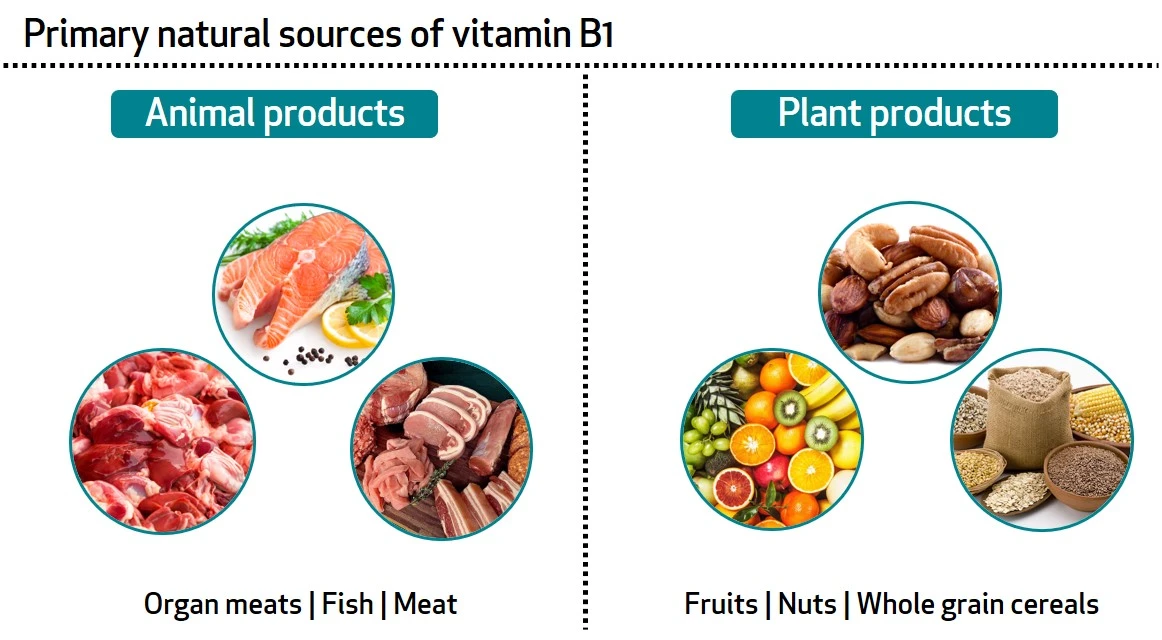Vitamin B1, also known as thiamine, is an essential nutrient that plays a critical role in energy metabolism and the proper functioning of the nervous system. It is one of the eight B vitamins and is water-soluble, meaning it must be regularly consumed in the diet since it is not stored in large amounts in the body.

Thiamine is found in a variety of foods, both plant and animal-based. Here is a detailed look at some primary sources of vitamin B1:
The Recommended Dietary Allowance (RDA) for thiamine varies based on age, sex, and life stage. The RDAs are established by the Food and Nutrition Board of the Institute of Medicine and are intended to cover the nutritional needs of nearly all (97-98%) healthy individuals in a particular life stage and gender group.
Here are the RDAs for thiamine:
Thiamine is crucial for several biochemical processes:
Deficiency can lead to:
Thiamine is converted into its active form, thiamine pyrophosphate (TPP), which acts as a coenzyme in metabolism, glycolysis, the Krebs cycle, and the pentose phosphate pathway. It is vital for carbohydrate, lipid, and protein metabolism.
Thiamine is available in various forms, including tablets, capsules, and injectable solutions. The RDA for adults is 1.2 mg/day for men and 1.1 mg/day for women. Higher doses may be necessary for certain conditions and populations, such as pregnant women, people with chronic alcohol use, and those with malabsorption issues.
Thiamine supplementation is generally well-tolerated. Common side effects include nausea and urticaria. Serious allergic reactions, such as anaphylaxis, are rare. Thiamine should be administered cautiously to individuals with known allergies to vitamin supplements.
Monitoring thiamine levels can be done through erythrocyte transketolase activity or direct measurement of erythrocyte TPP. Excess thiamine is excreted in urine, and no toxicity from high thiamine intake has been reported.
Effective management of thiamine deficiency involves a collaborative approach among healthcare professionals, including dietitians, pharmacists, and primary care clinicians. Early recognition and treatment are crucial for preventing severe complications and improving patient outcomes.
Ensuring adequate intake of thiamine through a balanced diet is essential for maintaining health. Including thiamine-rich foods like whole grains, legumes, nuts, seeds, meats, and fortified products can help meet daily requirements and prevent deficiency.